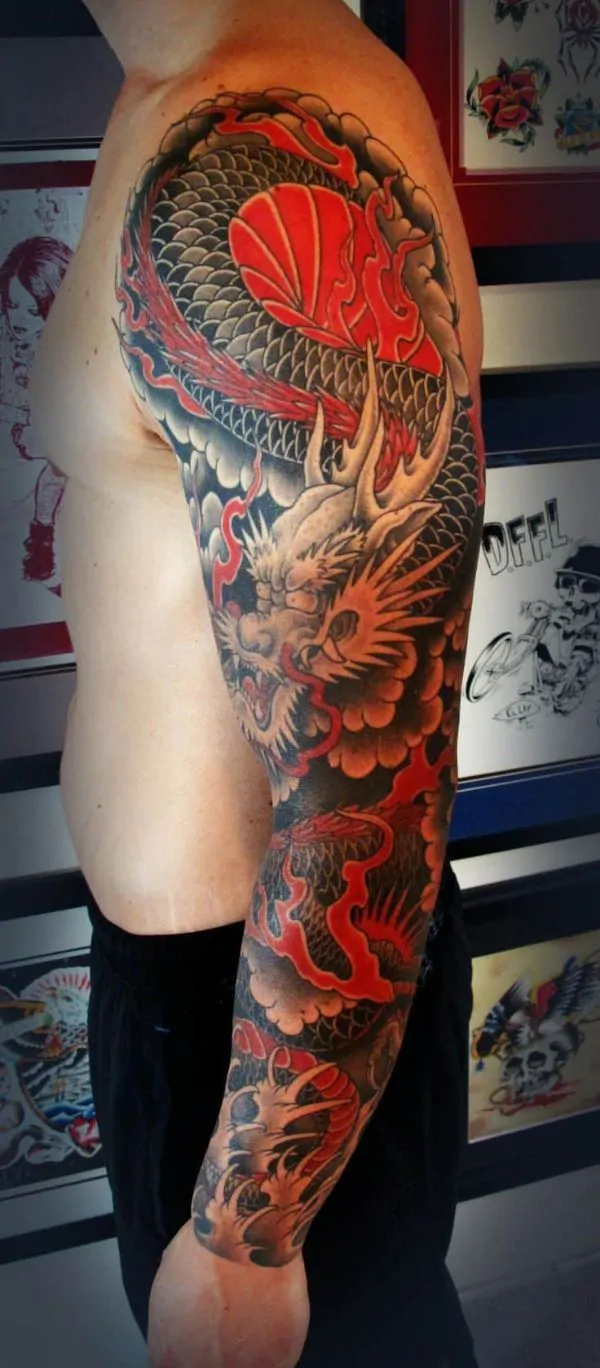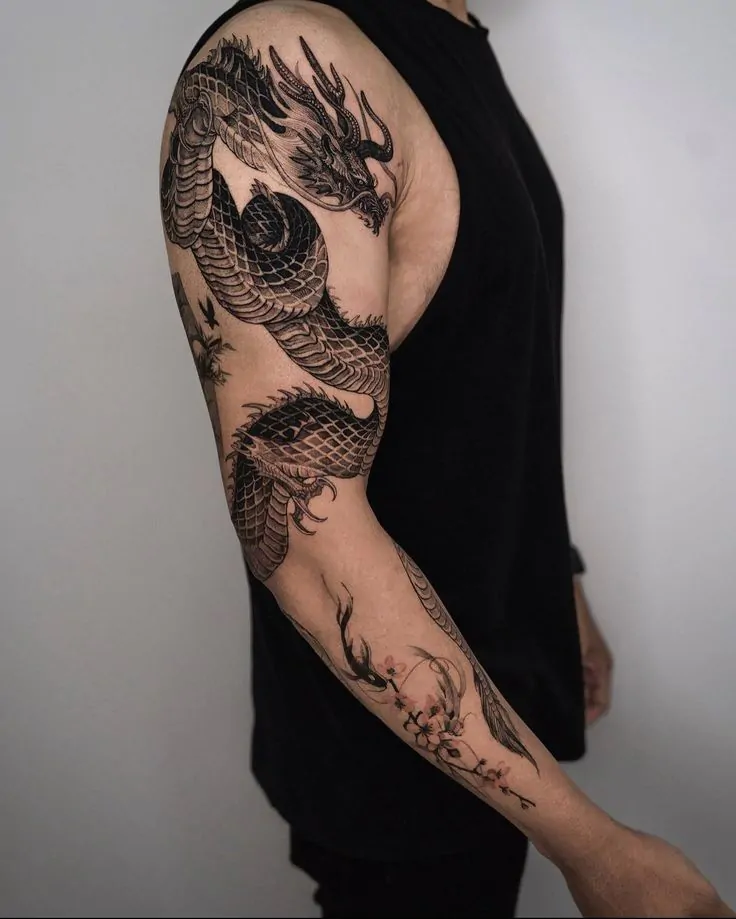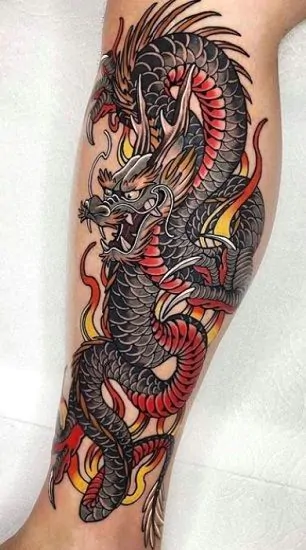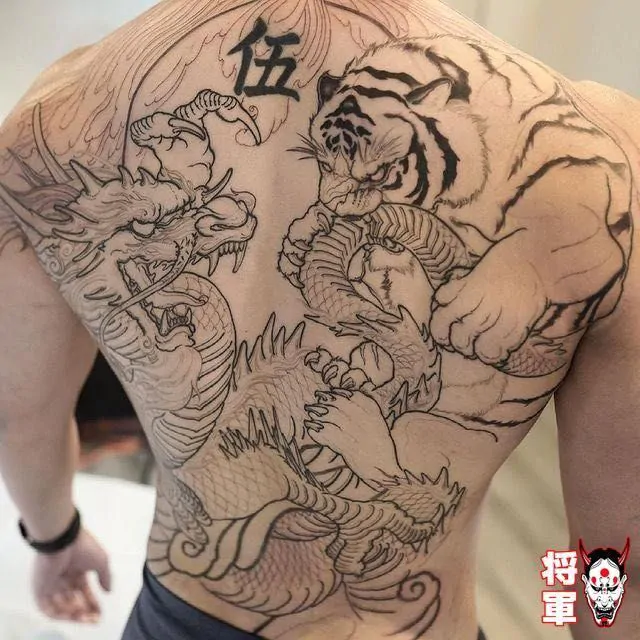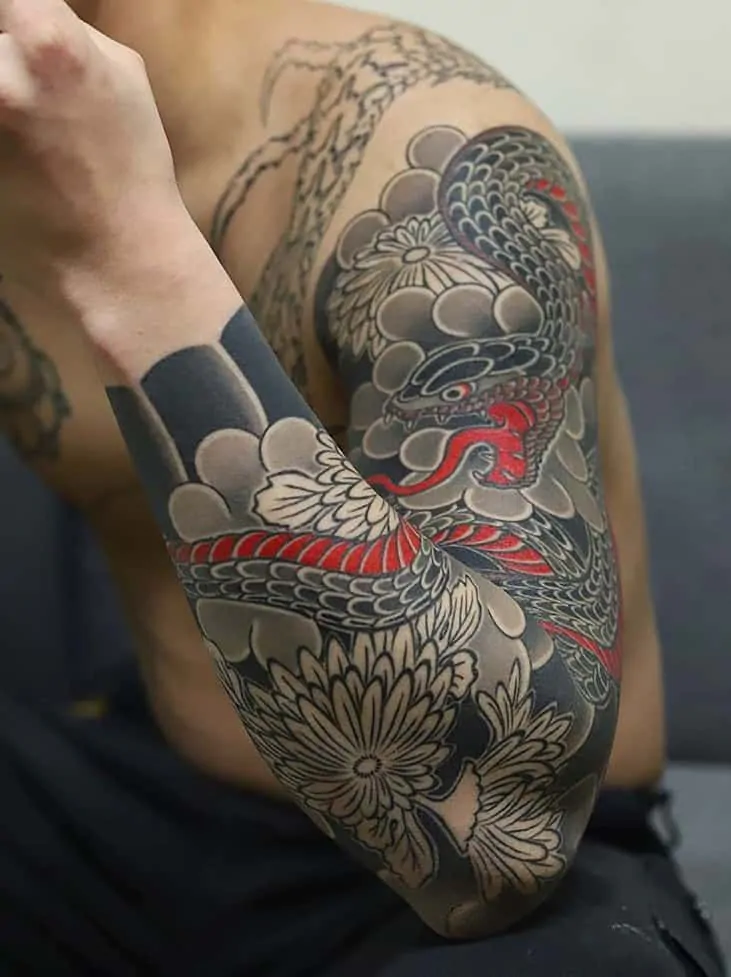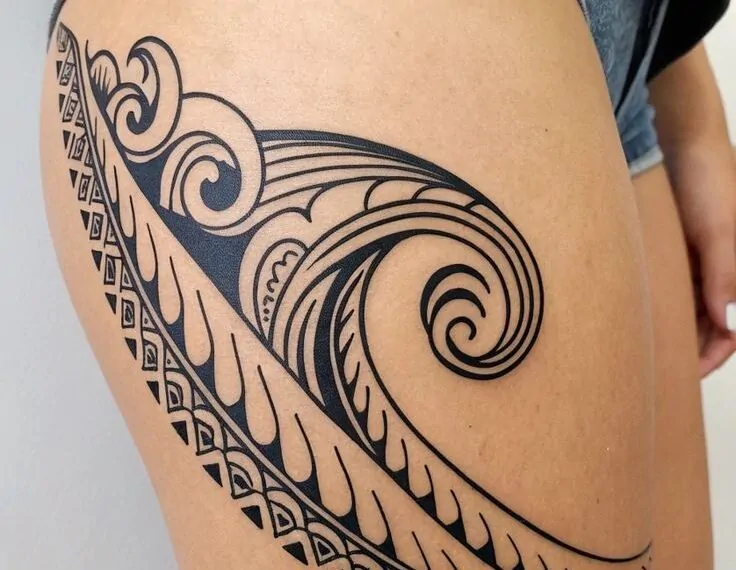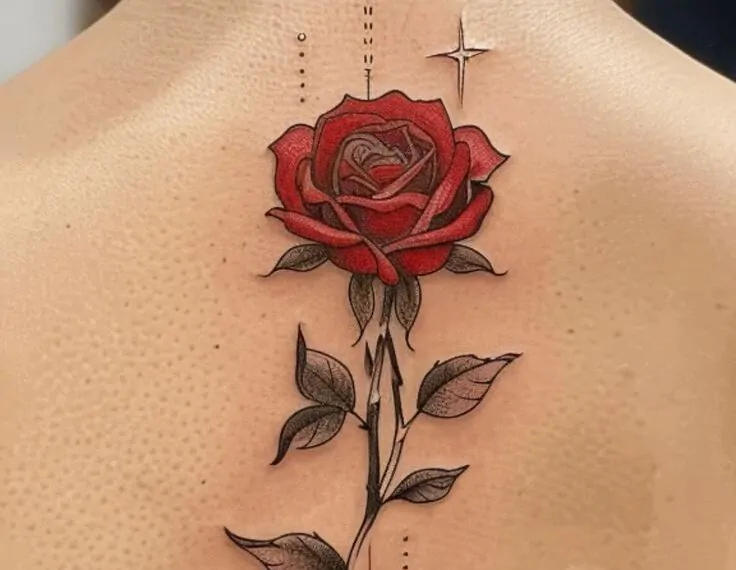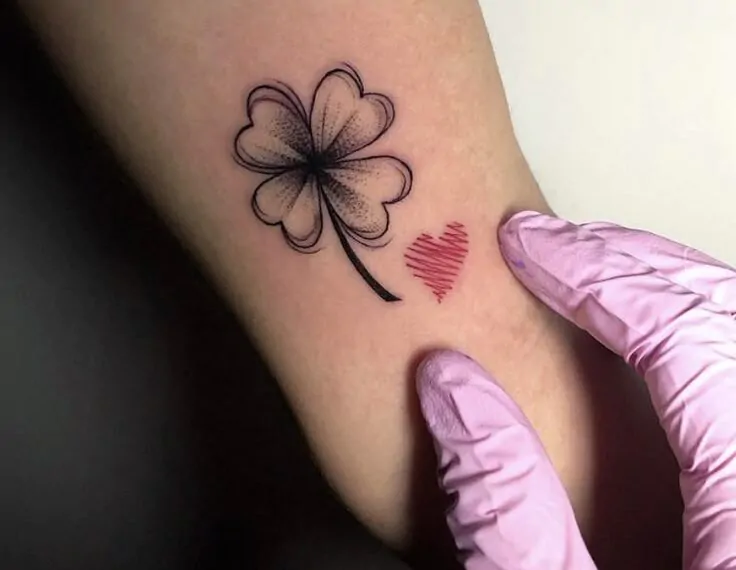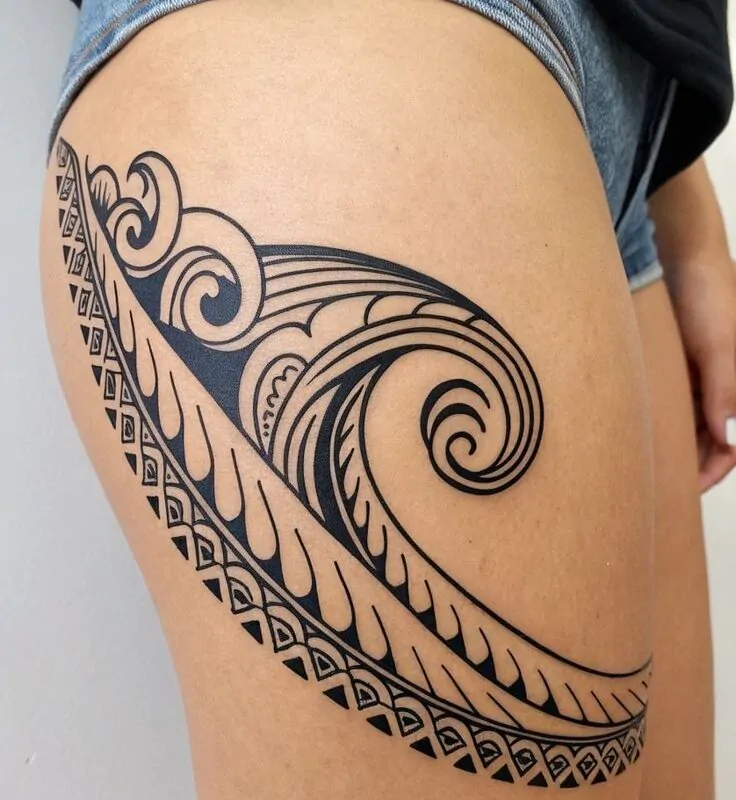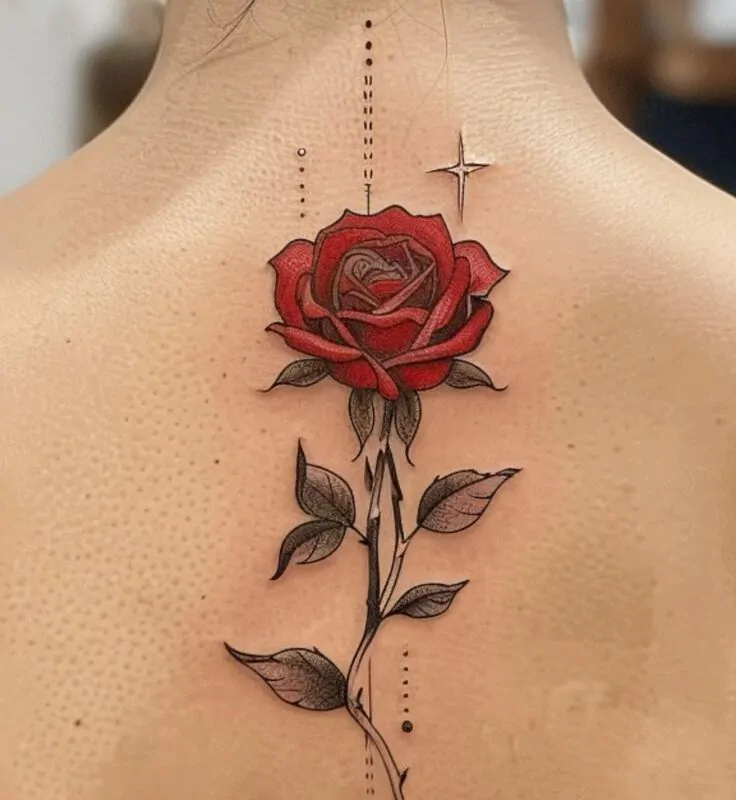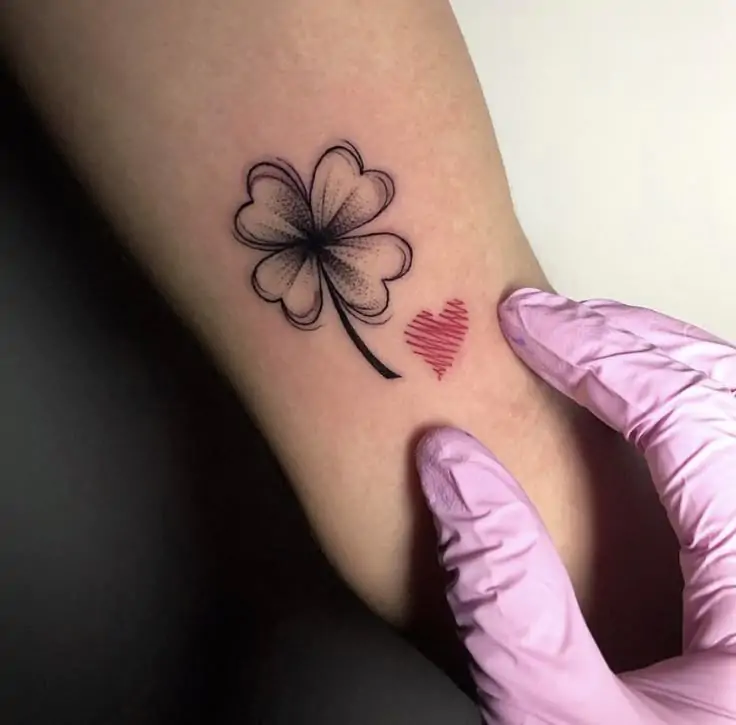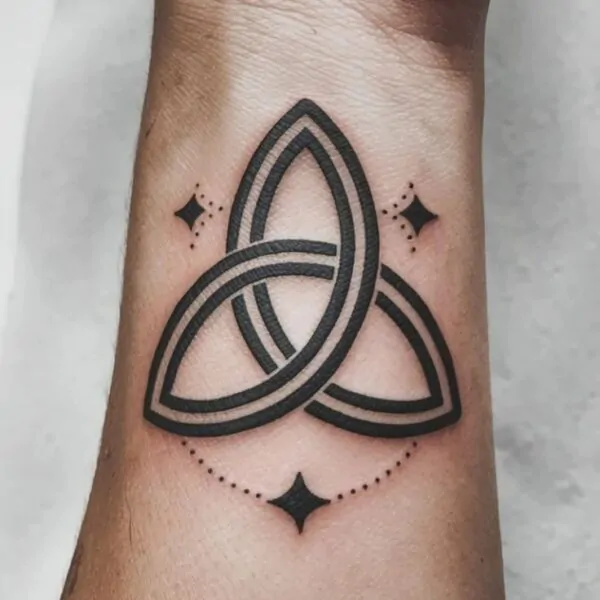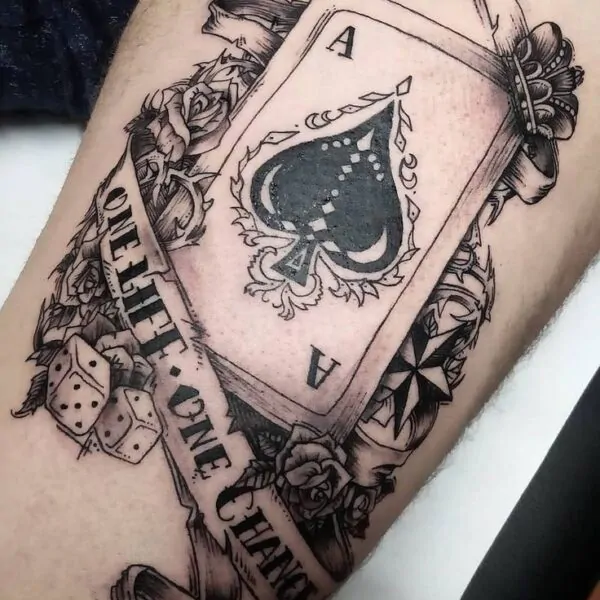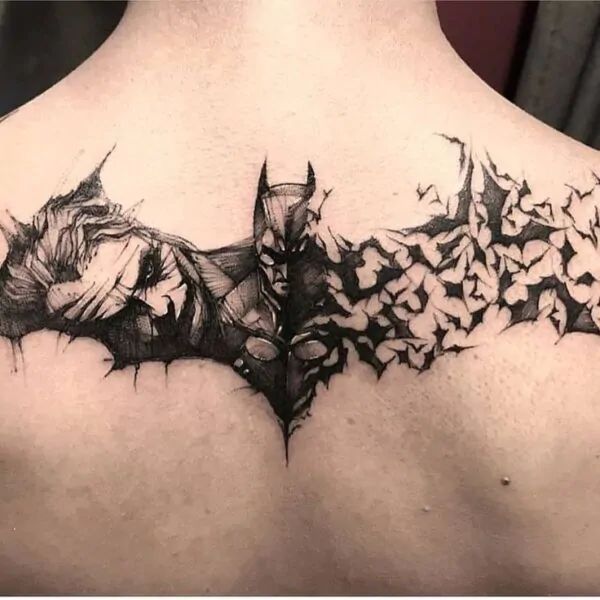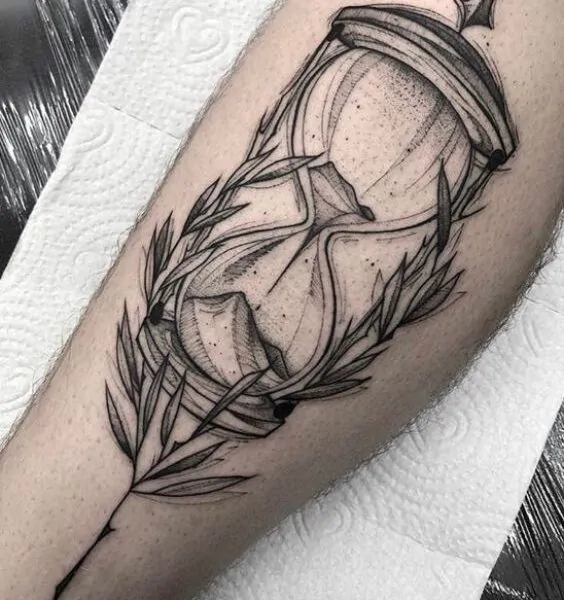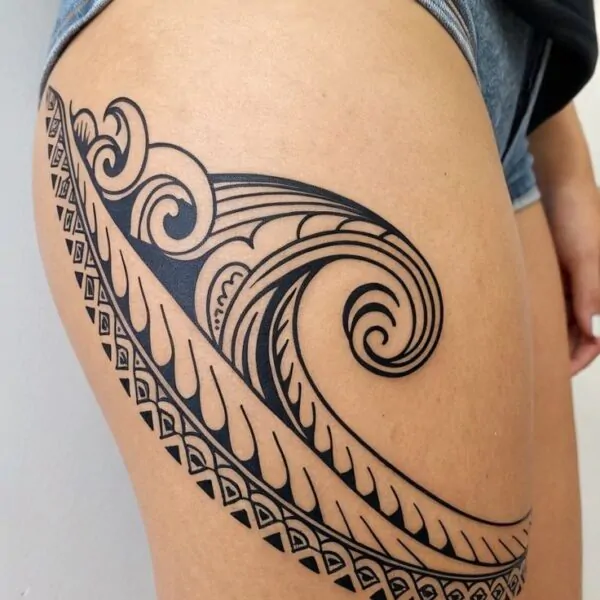Ever wondered why the dragon, seen as fierce in Western stories, becomes a symbol of wisdom and protection in Japan? Japanese dragon tattoos carry deep meanings from centuries of myths and symbols. We’ll look into the special meaning of Japanese dragon tattoos, their symbols, and how they connect to nature and spirituality.
These tattoos show strength, balance, and good luck. They also challenge the usual views of dragons in different cultures. Let’s dive into Japanese art and see how these tattoos tell a story of power and good fortune.
Introduction to Japanese Dragon Tattoo Meaning
Japanese Dragon Tattoo Meaning are more than just body art. They are cultural icons deeply rooted in Japanese art and folklore. These tattoos are not only visually stunning but also carry deep meanings. They symbolize strength, wisdom, and a strong bond with nature.
The Japanese dragon tattoo cultural significance goes beyond looks. Each tattoo tells a story, representing protective and kind forces in the culture. By understanding the Japanese dragon tattoo symbolism, we see how these tattoos express personal identity and cultural heritage. This sets the stage for exploring their meanings and interpretations in the world of Japanese dragon tattoos.
Origin of Japanese Dragon Tattoo Meaning
The story of Japanese dragon tattoos goes way back to ancient times. In those days, dragons were very important in both Chinese and Japanese cultures. In Japan, these beliefs mixed with Chinese stories, creating a new view of dragons.
Over time, these tattoos started to mean different things in society. They showed respect for nature and the world around us. Today, they are seen as a way to honor the lasting impact of dragon myths in Japan.
These tattoos have changed over the years, but they still stand for strength, safety, and wisdom. Looking into their history helps us understand their deep meaning today.
What Does a Japanese Dragon Tattoo Mean?
Japanese dragon tattoos are more than just beautiful designs. They carry deep meanings tied to culture and spirituality. These tattoos symbolize strength, wisdom, and the power of nature. They show the importance of these values and traditions in the art.

Symbolism of Strength and Wisdom
Japanese dragon tattoos are symbols of strength and wisdom. They are seen as guardians, showing the qualities needed to overcome life’s challenges. The dragon’s powerful look and intense gaze represent not just physical strength but also mental toughness and enlightenment.
People get these tattoos to show their wish for resilience and wisdom in their lives.
Connection to Water Elements in Japanese Culture
Water is very important in Japanese culture, and dragons are linked to it. These tattoos show the flow of life and feelings, like water. Dragons are tied to rain, rivers, and seas, showing they control water’s power.
This link makes them spiritually important, showing respect for nature’s cycles and forces.
Japanese Dragon Tattoo Symbolism Explained
In Eastern cultures, like Japan, Japanese dragon tattoos mean wisdom, strength, and protection. They are seen as kind and protect against bad luck. In the West, dragons are often seen as scary and linked with chaos and fear.
This difference shows how deep and varied the meanings of dragon tattoos can be.
Cultural Differences: Eastern vs. Western Perspectives
Dragons show the different values of their cultures. In Japan, they symbolize power with a moral side. They are shown in calm poses, showing balance and harmony.
This view matches Japan’s deep connection with dragons as spirits of rain and water. In the West, dragons are often seen as fire-breathing monsters, showing their scary power. This difference gives us a unique look at the meaning of Japanese dragon tattoos.
Emerging Visual Styles and Traditions
Today, tattoo art is mixing old and new styles. Artists are combining traditional Japanese dragon tattoos with new trends. This adds new meanings to these tattoos.
It also shows how Japanese dragon tattoos can change with the times. Artists use new colors, shapes, and techniques while keeping the tattoos’ deep meanings. This mix of old and new shows the tattoos’ lasting importance in today’s world.
Traditional Japanese Dragon Tattoo Meaning
The traditional Japanese dragon tattoo holds deep cultural meanings. It is seen as a symbol of balance and good luck. These tattoos are more than just art; they carry important messages.
Represents Balance and Good Fortune
In Japanese stories, dragons show the balance between yin and yang. This idea is key to understanding the dragon tattoo’s significance. Wearing a dragon tattoo is thought to bring positive energy and luck.
It’s not just for looks. It’s a sign of hope and strength.
Association with Nature and Spirituality
Dragons link closely with nature and the spiritual in Japanese culture. They are often shown with water, symbolizing a bond with nature and the journey of self-discovery. This connection makes the dragon tattoo meaningful.
It shows respect for nature and the spiritual world that dragons symbolize.
Colors and Their Significance in Japanese Dragon Tattoos
In the world of Japanese dragon tattoos, colors are very important. Each color has its own meaning, showing the personality and goals of the person wearing it. Knowing what each color means can help us appreciate these tattoos more. It’s key to picking the right colors to share the message you want.
Understanding Black, Blue, Green, and Gold Dragons
Japanese dragon tattoos use different colors to show various traits. Black dragons stand for wisdom and knowledge. Blue dragons mean peace and calmness. Green dragons link to nature, showing growth and balance. Gold dragons symbolize wealth and good fortune. Knowing these meanings helps us see the deep stories in these tattoos.
Meaning Behind Each Color Choice
Japanese dragon tattoo colors mean more than just looking good. Each color tells a story that connects with the person wearing it. For instance, a black dragon tattoo shows a path to wisdom. A green dragon tattoo shows a bond with nature. Learning about these colors deepens our understanding of these unique tattoos.
Design Elements of Japanese Dragon Tattoos
The design of Japanese dragon tattoos is detailed and thoughtful. Artists focus on the dragon’s flowing body, a key part of traditional Japanese tattoo art. This shape looks beautiful and symbolizes the fluidity of water, important in Japanese culture.
Each scale on the dragon is detailed carefully. This adds to the tattoo’s beauty and shows the dragon’s strength. The scales also reflect light, making the design seem alive.
The dragon’s pose shows movement and energy. Whether it’s flying or curled around something, its pose shows power and wisdom. These details create a story that touches both the person wearing it and those who see it.
Popular Placement for Japanese Dragon Tattoos
The placement of Japanese dragon tattoos is key to their meaning. Different spots can change the tattoo’s message and show off the wearer’s style. For instance, the back is great for big, detailed tattoos that grab everyone’s attention. It’s a spot often picked for full dragon designs, symbolizing strength and protection.
Arms and legs are also popular spots for these tattoos. They let the dragon seem alive and moving. An arm tattoo shows off inner strength, while a leg tattoo stands for stability and resilience.
Where you put a tattoo tells its story. A dragon near the heart links to bravery and emotional strength. Back tattoos, on the other hand, suggest a guardian spirit. This variety in placement makes Japanese dragon tattoos more meaningful, connecting deeply with the person wearing them.
Interpretation of Japanese Dragon Tattoo Variants
In the world of Japanese tattoo art, it’s key to know what each dragon tattoo means. There are six types of Japanese dragons—Sui, Han, Ri, Fuku, Ka, and Hai—each with its own story. These dragons help people show their personal stories and beliefs through tattoos.
Six Types of Japanese Dragons Defined
The Sui dragon is linked to water and feelings. It shows the flow of emotions and intuition. The Han dragon balances yin and yang, bringing peace and harmony.
Ri dragons are wise and connect with the universe. Fuku dragons mean good luck and success. Ka dragons stand for strength and resilience. Hai dragons symbolize change and spiritual growth.
Specific Traits of Each Dragon Variant
Knowing what each dragon means helps us appreciate their stories. For example, Sui dragons are about being flexible, while Fuku dragons are about being lucky. People can pick designs that match their values or goals. This makes Japanese dragon tattoos more than just pretty pictures. They tell a story of who we are and what we aim for.
FAQ
What does a Japanese dragon tattoo mean?
Japanese dragon tattoos symbolize strength, wisdom, and kindness. They show a deep bond with nature. Unlike Western dragons, they are seen as protectors and bring good luck.
What is the cultural significance of Japanese dragon tattoos?
Japanese dragon tattoos are deeply meaningful in Japanese culture. They come from ancient myths and stories. They show the balance between nature and the spirit world. They also express personal identity and beliefs.
How did the meaning of Japanese dragon tattoos originate?
Japanese dragon tattoos blend ancient Chinese and Japanese stories. Over time, they took on a unique meaning in Japanese culture.
Why are water elements significant in Japanese dragon tattoos?
Water is key in Japanese dragon tattoos because dragons link to rain, rivers, and seas. This shows their role in life and emotions. It shows they can control nature.
How do Eastern and Western perspectives on dragon tattoos differ?
In the East, like Japan, dragons are seen as kind protectors. In the West, they are often seen as scary and destructive. This shows how different cultures view dragons.
What does a traditional Japanese dragon tattoo represent?
Traditional Japanese dragon tattoos stand for balance, luck, and a link to nature and the spirit. They are seen as symbols of wealth and peace.
What is the significance of color in Japanese dragon tattoos?
Colors in Japanese dragon tattoos mean different things: black shows wisdom, blue means peace, green is for nature, and gold stands for wealth. The colors help show the wearer’s identity and goals.
What are the key design elements in Japanese dragon tattoos?
Japanese dragon tattoos have flowing shapes, detailed scales, and dynamic poses. These make the dragons look majestic. They also add to the tattoo’s beauty and meaning.
Where are popular placements for Japanese dragon tattoos?
Japanese dragon tattoos are often on the back, arms, or legs. Where you put it shows its personal importance and adds to the story of the tattoo.
What are the different types of dragons in Japanese culture?
Japanese culture knows six types of dragons: Sui, Han, Ri, Fuku, Ka, and Hai. Each has its own traits and meanings. This lets people choose tattoos that match their values or goals.

Passionate about tattoos and their profound meanings. My blog is dedicated to exploring the stories and symbolism behind body art. Each tattoo tells a unique story, and my goal is to share these fascinating narratives with my readers.

